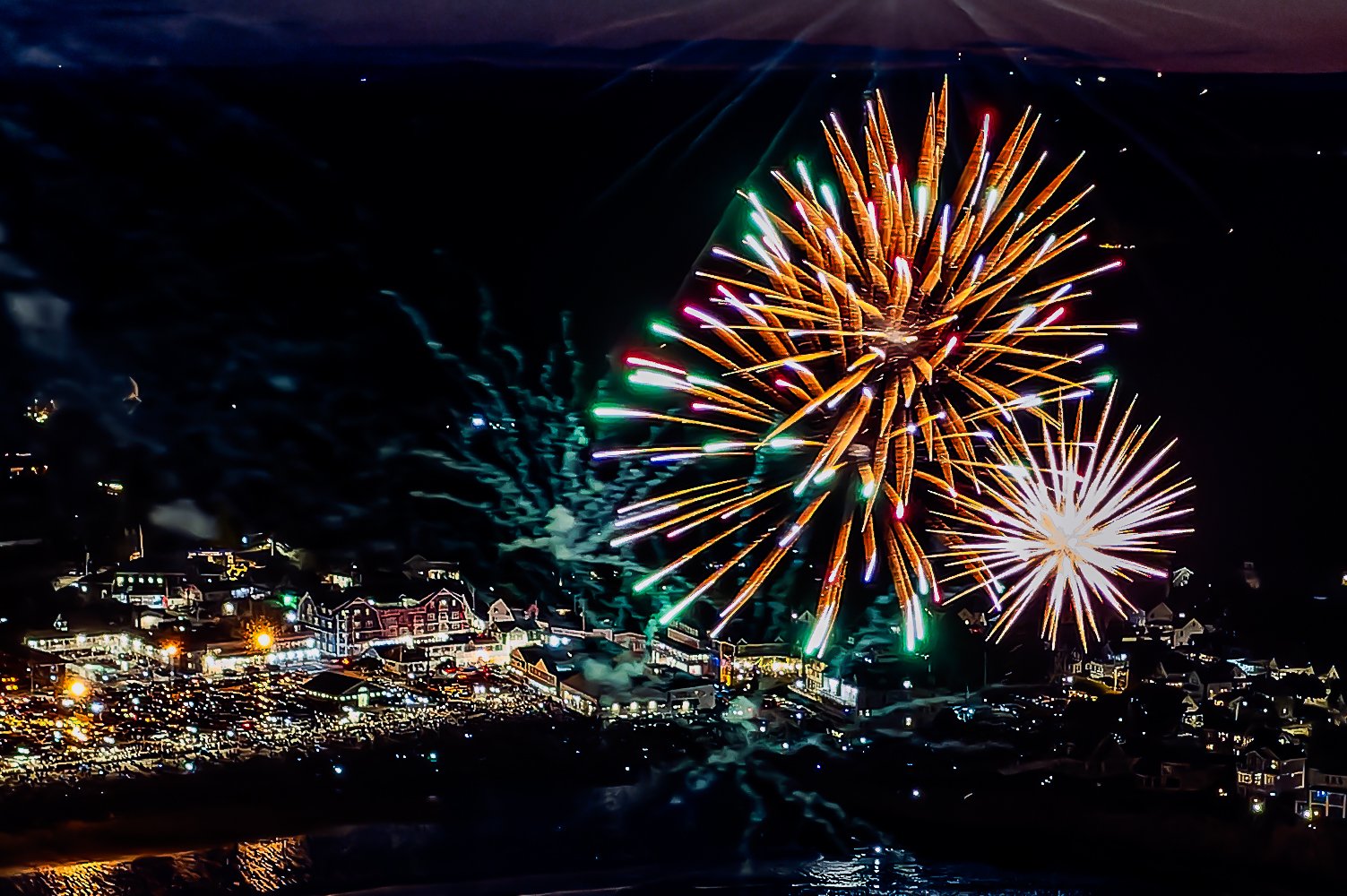
Book Summaries
Tips & Techniques
-

Learn About Lenses
-

Capturing the Night Sky by Mike Sheets
-

Decisive Moment Book - Bresson
-

Digital Photography Complete Course
-

On Photography by Susan Sontag
-

Beauty In Photography By Robert Adams
-

Next Level Genre
-

Fireworks!
1. Location, Location, Location: Consider the overall composition and potential foreground or background elements that can enhance your photos. A good vantage point may be anywhere from 3 steps to the side and a higher or lower elevation.
2. Steady & Stable: Use a sturdy tripod to keep your camera steady throughout the long exposures. Minimize camera shake by using a remote shutter release.
3. Ready, Aim Shoot: Anticipate the timing of the fireworks bursts and be ready to release the shutter just before the explosion. This helps capture the full burst and trail of the fireworks. Keep your eye to the sky.
4. Manual Mode is a Must: Switch your camera to Manual Mode (M) to control the shutter speed, aperture, and ISO to experiment for the ideal effect.
5. Low as you can go ISO: Start with a ISO 100 or 200 and increase as needed, noise can become more apparent in the dark sky.
6. Eight is Great: Choose an aperture like f/8 or wider to allow more light into the camera to create a complimentary depth of field to make the fireworks stand out.
7. Loooong Exposure: Set a slow shutter speed to capture the trails and bursts of the fireworks. Start with a shutter speed of around 1-3 seconds (4 for finale) and adjust as needed.
8. Manual Focus: After locking in early fireworks from auto focus, switch your lens to manual focus mode and set it to infinity on your lens.
9. Frame the Subject: Pay attention to your composition and framing. Consider elements like buildings or landscapes to add context and depth to capture unique perspectives. See photo using backdrop of Short Sands Beach, York giving a different perspective.
10. Zoom and Adjust: Regularly zoom in your shots on the camera's LCD screen and check focus, clarity, exposure and composition to ensure you are capturing the fireworks effectively. -

Fog
1. Subjects: Look for subjects that create a sense of mystery and intrigue. Classics include harbors, beaches, boats, and just about anything shot in the fog can be adapted in black and white
2. Exposure: Check you histogram, fog can trick your camera's light meter into underexposing images. Shoot in manual mode to control the overall mood of the exposure settings. Play with the exposure compensation setting to get it right.
3. Focus: Autofocus can sometimes struggles to find a clear point of focus.. Experiment with different focal points at different apertures .
4. Post-processing: Enhance the atmosphere by adjusting contrast, adding a slight vignette, or boosting the saturation of certain colors to bring out the mood you want to convey.
5. Be patient and embrace the mysterious and ethereal effects of fog, and experiment with different compositions and techniques to capture compelling images. -

Alewife Run
1. Map it out: Gather info about the timing and location of where the alewife are running. Check local fish ladders, social media and other photographers who may share when and where they’re running.
2. Choose the Right Gear: A DSLR or mirrorless camera with a zoom lens is best.
3. Capture the Motion: Use a fast shutter speed to freeze the focus.
4. Focus on Action: Zoom in and capture details with close-up shots providing more compelling shots.
5. Watch your Backgrounds: Showcase the elements such as the river, rocks, trees, or any other composition components that add the experience of the alewife run.
6. Stay Focused: Look for unique moments and interactions between the alewives and birds. Constant attention leads to capturing extraordinary and unexpected shots.
7. Post-Processing : After getting your shots, cull your images, and use editing software to enhance exposure, contrast, tones, etc.
